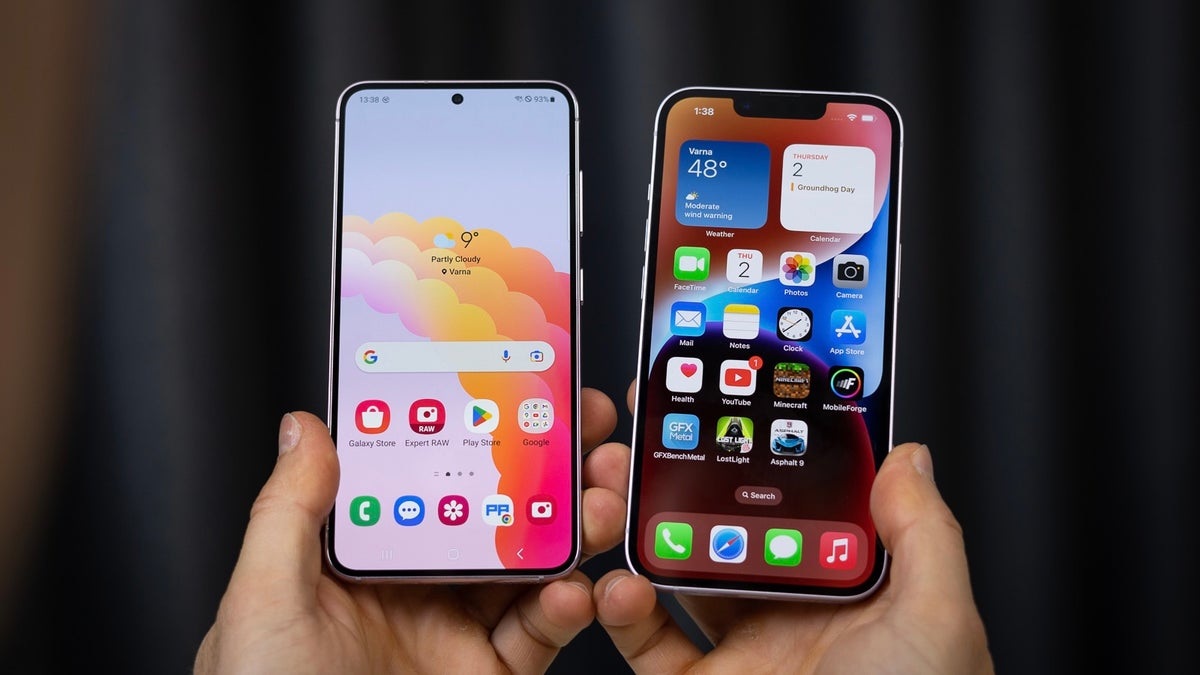
Preparation Before Transfer
Before starting the transfer process, prepare your devices and gather necessary tools and information. Follow these steps:
- Charge Your Devices: Ensure both your Android device and iPhone are fully charged to prevent interruptions.
- Stable Wi-Fi Connection: Both devices should have a stable Wi-Fi connection, crucial for the Move to iOS app.
- Storage Capacity: Verify your iPhone has enough space for all data you plan to transfer. Consider deleting files or using cloud storage services like Google Drive or iCloud if needed.
- Backup Your Data: To avoid data loss, back up your Android device using Google Drive or another cloud service.
Method 1: Using the Move to iOS App
The Move to iOS app, developed by Apple, facilitates data transfer from Android to iPhone.
Step-by-Step Guide Using Move to iOS
- Set Up Your iPhone: Begin setting up your new iPhone until reaching the "Apps & Data" screen. Tap "Move Data from Android."
- Download Move to iOS on Android: Access the Google Play Store on your Android device and download the Move to iOS app.
- Open Move to iOS on Android: Open the app, tap "Continue," then enter the six-digit or ten-digit code displayed on your iPhone screen.
- Connect Devices Over Wi-Fi: Ensure both devices are on the same Wi-Fi network. On your Android device, select "Continue on the Android Device" and then choose "Connect."
- Select Transfer Data: Choose the data types to transfer, such as contacts, apps, and photos. Tap "Continue" after making selections.
- Wait for Transfer Completion: The transfer process may take time depending on data volume. Keep both devices plugged in until the loading bar on your iPhone finishes.
- Complete Setup: After the transfer, tap "Done" on your Android device and continue setting up your iPhone by following on-screen prompts.
Limitations of Move to iOS
- Time-Consuming: The process can take a long time if transferring large amounts of data.
- Limited Data Types: Only supports transferring a few file types, such as contacts, apps, and photos.
- Requires Unset iPhone: The app only works if your iPhone has not been set up yet. If already set up, you'll need to erase it and start over or use alternative methods.
Method 2: Using Third-Party Transfer Tools
For more extensive data types or issues with the Move to iOS app, third-party tools like AnyTrans offer a better option.
Step-by-Step Guide Using AnyTrans
- Download AnyTrans: Visit the iMobie website and download AnyTrans, a professional data transfer tool supporting all data types from Android to iPhone.
- Launch AnyTrans: Launch AnyTrans on your computer and connect both Android and iPhone devices via USB cables.
- Choose Transfer Mode: Select "Phone Switcher" on the left panel and choose "Phone to iPhone" mode.
- Select Source and Target Devices: Choose your source device (Android) and target device (iPhone), then click "Next."
- Start Transfer Process: Click "Next" to start transferring Android files to your iPhone. All supported files will be checked by default.
- Monitor Transfer Progress: AnyTrans will automatically detect and transfer all supported files, including photos, videos, call logs, contacts, WhatsApp data, text messages, etc.
- Complete Setup: Follow on-screen instructions to finish setting up your iPhone after the transfer.
Advantages of Using AnyTrans
- Fast and Efficient: Significantly faster than the Move to iOS app, especially with large data volumes.
- Supports All Data Types: Transfers all data types from Android to iPhone, including photos, videos, call logs, contacts, WhatsApp data, text messages, etc.
- No Setup Restrictions: Unlike Move to iOS, AnyTrans does not require your iPhone to be unset before transferring data.
Additional Tips for Transferring Apps
Transferring apps from Android to iPhone can be done using either method mentioned above. However, if issues arise with app transfer using Move to iOS or you prefer a more manual approach:
Using Cloud Storage Services
- Backup Apps on Google Play Store: On your Android device, go to the Google Play Store and backup all installed apps by enabling "Backup & reset" under Settings > System > Advanced > Reset options.
- Restore Apps on iPhone: On your iPhone, go to Settings > [Your Name] > iCloud > iCloud Backup and restore the backup containing your apps.
- Download Apps Manually: Alternatively, download each app individually from the App Store if available.
Using Third-Party Tools
- Download AnyTrans: As mentioned earlier, AnyTrans supports transferring apps along with other data types.
- Transfer Apps Manually: Connect both devices via USB cables and use AnyTrans to transfer apps directly from your Android device to your iPhone.
Transferring data and apps from an Android device to an iPhone can be straightforward with the right tools and steps. While the Move to iOS app is convenient for basic data types like contacts and apps, third-party tools like AnyTrans offer more flexibility and speed when dealing with larger data volumes. By understanding the limitations of each method and choosing the best tool for your needs, you can ensure a smooth transition from Android to iPhone.
